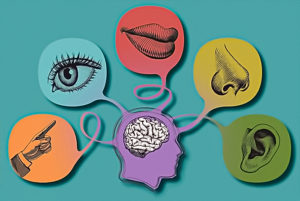Sensory Register at any moment, thousands of pieces of information reach our eyes, ears, and other Sense organs. Very little of this sensory information ever gets stored in memory, however. The information enters a sort of mental display screen called a sensory register, which very briefly displays simple pieces of information, such as colors, shapes, and tones. As long as the information is in the sensory register, we have access to it, just as if the object was still before our eyes or the sound still reverberating in our ears.
But material held in the sensory register fades within moments unless we pay attention to it and thus transfer it to short term memory. As a result, only a small fraction of the material in the sensory registers is retained. It’s a good thing, too. If all of the sensory information that we receive were to enter our memories, our memory capacities would quickly become overloaded. Each of our senses appears to have its own sensory register.
What Is The Importance of Sensory Register of Memory
The two sensory registers that have been studied most extensively are those for vision and for hearing. Bits of visual information flashes of light, shapes, and colors held in the sensory register for vision are called icons (pronounced “eye-cons”). Icons begin to fade almost instantly, and by the end of a second they are gone. It is because Of these iconic images that you see a trail of light when you wave a bright object around in the dark. On the Fourth of July boys and girls sometimes light sparklers at night and then move them around in the dark. By moving the sparkler faster than the iconic image Of its blazing tip can fade, the children can make complex loops and circles of light.
Tones and other sounds held in the sensory register for auditory information are called echoes , and they can last as long as two to four seconds . The word echo was chosen to refer to the continuing availability of a sound in the mind’s ear, something like the more familiar “echoes” that you hear when your voice bounces Off a cliff or a gymnasium v,pall. Such echoes make it possible for us to attend selectively words or statements that are important to us.
Say that you’re sitting at a crowded football stadium. Suddenly, through the roar of the crowd, you hear a voice calling your If it were not for your auditory sensory memory, the “Bern” would have been lost before you ever heard the “dette.” Without an auditory sensory memory, therefore, the sounds would have no significance to you and would never penetrate through the din into your consciousness. More generally, the echoes that briefly linger in our auditory sensory register help us to hear strings of sounds as meaningful words and phrases. These echoes fade quickly, however, and can be wiped out by a new auditory stimulus. As in the case of a visual stimulus, in order to remember a sound for more than a fleeting moment, we must pay attention to it and thus transfer the information to short-term memory.
